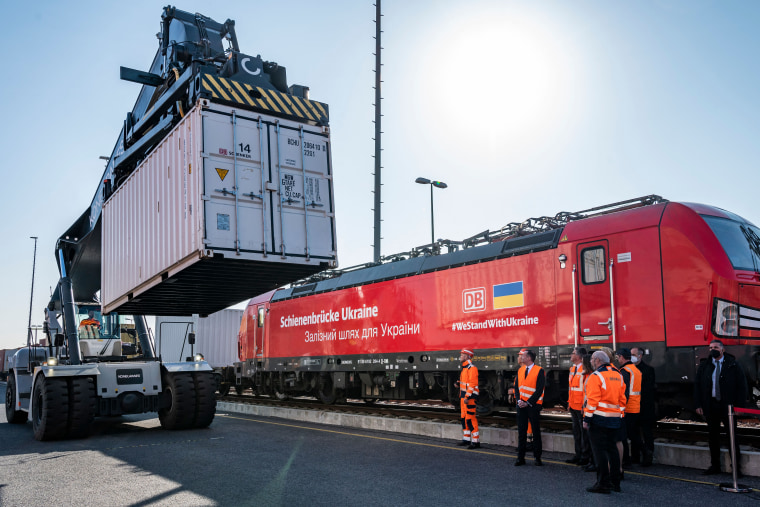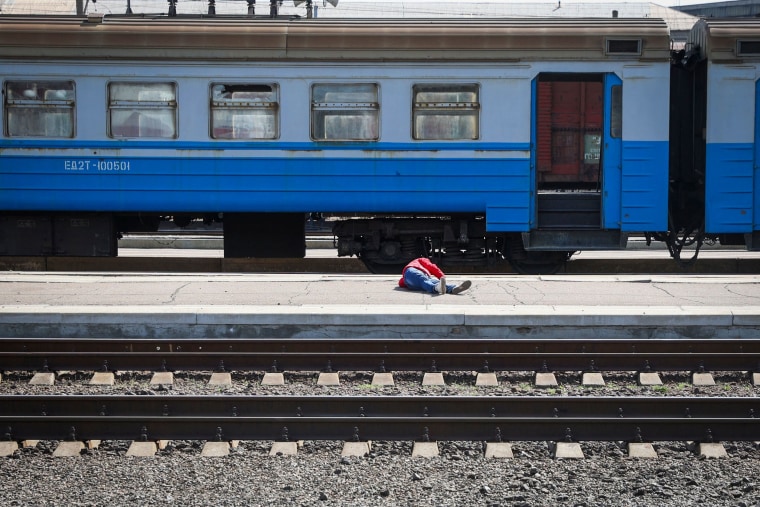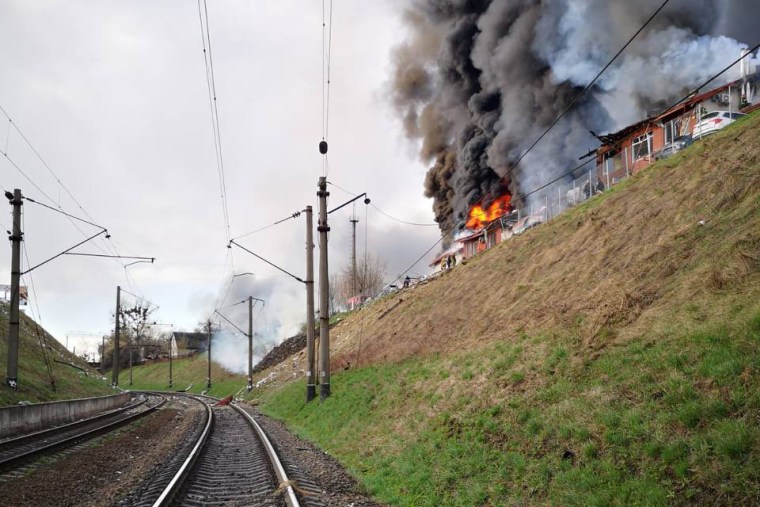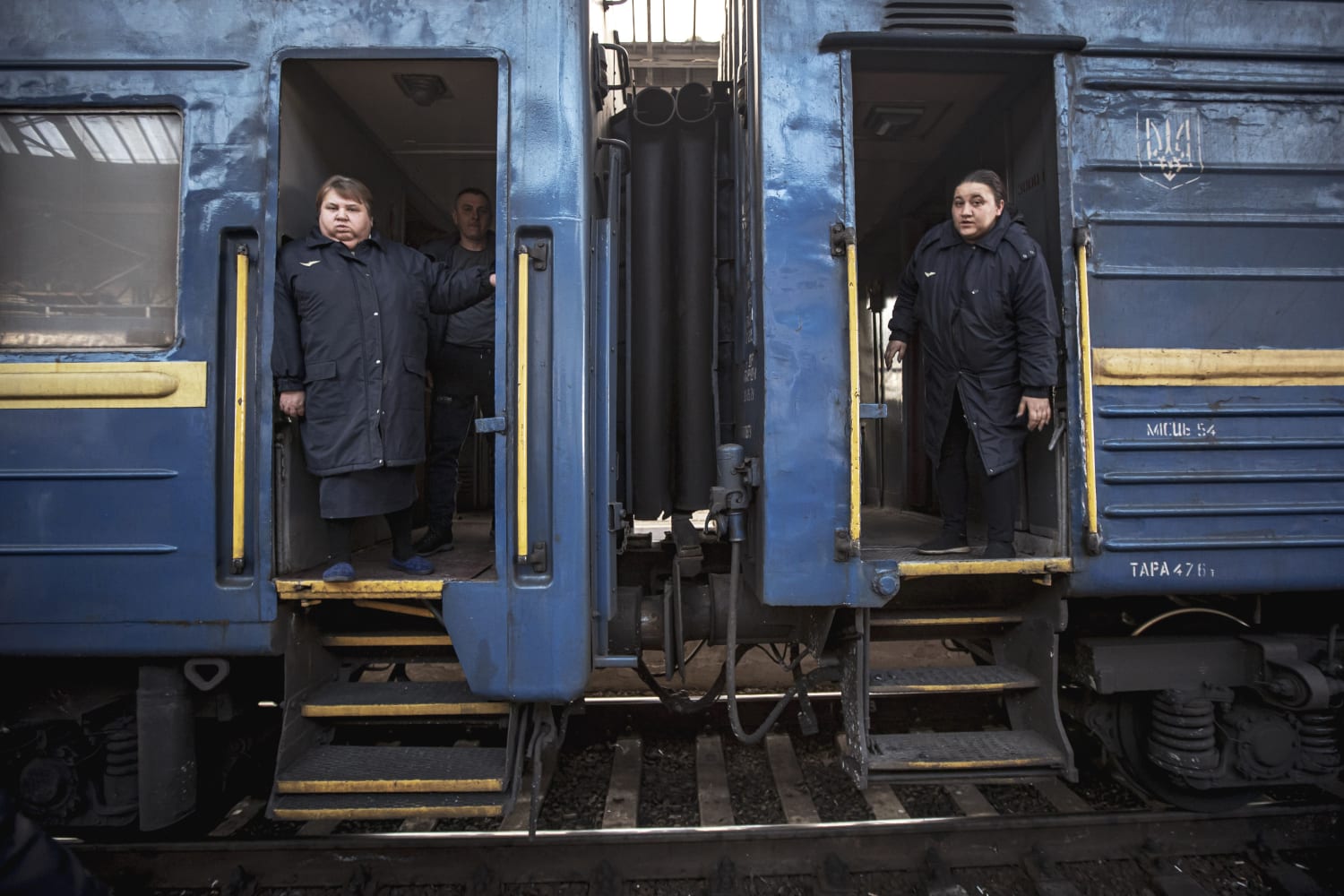Rail has played a pivotal role for both sides of the war and may help explain the failure of Russian forces to win control of the country. Russia was unable to fully use the railways in the early stages of the invasion, experts say, leading to logistical problems and images of Russian trucks stuck in seasonal winter mud.
“The railways have played a massively important role in the conflict so far, insofar as it’s the way the Russian motorized ground forces move their troops around,” said Emily Ferris, a Russia expert at the Royal United Services Institute think tank in London. “All of the problems they’ve had in the north are because they weren’t able to control the logistical hubs.”
Until recently, Russian forces had stopped short of targeting railway infrastructure in Ukraine in the hope they would take control of it themselves, Oleksandr Pertsovskyi, CEO of Ukrainian Railways’ passenger trains business, told NBC News.
“The Russian military depends heavily on rail logistics, and one of the reasons why they’re rather inefficient is the fact that they don’t have reliable supply lines at the moment,” he said.
Seemingly unable to take control of the rail network, Russia instead now appears to be intent on trying to disable it.
“Two weeks back, it appears that there were more and more deliberate [Russian] attacks on rail infrastructure,” Pertsovskyi added.
Missiles rained down on five Ukrainian train stations and regional railway hubs Monday night, mostly in western and central areas, killing one railway worker and wounding four, the Ukrainian rail authority said. The Russian Ministry of Defense said in a briefing Monday that the railway station attacks were designed to stop the shipment of “foreign weapons and military equipment” to Ukrainian troops in the eastern Donbas region.

It’s there that Russian forces are now focused, with a crucial battle for eastern Ukraine that could be decided by Kyiv’s ability to mobilize equipment and weapons — much of which is now being sent by allies to aid the defensive stand — by road and rail.
Russia wants to stop this inbound military aid from Western countries that are now beginning to resupply the Ukrainians, said Gen. Philip Breedlove, a retired four-star Air Force general and former supreme allied commander of NATO, speaking by phone from Florida.
But that’s not the whole story.
“It’s also just another step in Russia’s ongoing war against the Ukrainian civilian population, on innocents,” said Breedlove, now chair of the Frontier Europe Initiative at the Washington-based Middle East Institute.
“I believe the Russians are attacking, on purpose, civilian structures that move people around and protect people,” he said. “They want Ukrainians to lose confidence in the civilian transportation infrastructure.”
The Russians are “scattering these little attacks around” to keep killing a “few people in this town, kill a few people in that town, kill a few people over here,” in order to maintain pressure and civilian fear, Breedlove said.
Other experts agree the airstrikes on railway targets also underscore the slow progress of Russia’s campaign and signal that the conflict has entered a dangerous new phase. Perhaps the first glimpse of this was in the deadly attack on a train station in Kramatorsk in the Donetsk region on April 8, in which at least 30 people died and 100 were injured, according to Ukrainian officials.

“In general, it’s part of a wider pattern to target Ukrainian infrastructure and civilians and to degrade their physical capacity to resist but also their morale — which doesn’t seem to be working,” said Ruth Deyermond, an expert in Russian security policy at King’s College London.
“Once it became clear that the Russian army wasn’t going to walk in and take Kyiv or Kharkiv or other cities, they moved to the second phase, which was trying to reduce parts of Ukraine to rubble, exactly as they did in Chechnya in the 1990s — it’s part of a long-standing pattern,” she said.
So far, every time a railroad is damaged, it just keeps getting repaired.
In some cases, Pertsovskyi said, fixes to damaged train lines can be completed in a few hours. Destroyed or damaged bridges are harder to address, but “the bottom line is that even though the attacks are constant, and intensifying, we still are able to run the system,” he said.
Actually destroying the rail infrastructure, he said, is “not an easy task because the system is quite reliable.”

The railway system Russia has been reliant upon may not have proven so resilient.
The weeks of buildup to the invasion saw satellite pictures of trains laden with military hardware making their way to the Ukrainian border — including through Belarus.
But the rail link from Belarus to Ukraine was severed, the head of the Ukrainian rail network said in March, leaving Russian forces even more reliant on their limited number of trucks, which were prime targets for small-scale ambush attacks, Ferris said.
“Controlling the railways is key here,” she said. “The Ukrainians know that, and they tried quite hard when they saw Russian advances on certain cities and villages … to bomb things like the bridges and cut off rail connections to stop the Russians where they were.”
The next logical step for Russia’s plan to create a corridor across Ukraine’s south is to take the Black Sea port of Odesa. A bridge linking the region with the rest of Ukraine and neighboring Romania was shelled twice this week, a possible effort to cut it off from military supplies.
But as in the north, Russian forces may find victory here easier said than done.
“The Russian army has done very badly and suffered tremendous losses,” Deyermond said. “Now they’re talking about the south and Donbas — but even there it’s very hard to see how they have the capacity to do that.”
“Will they make significant military gains?” she said. “Possibly, but are they going to be able to hold them? That seems much less likely.”
Phil McCausland reported from Kyiv, and Patrick Smith reported from London.
Source: | This article originally belongs to Nbcnews.com










